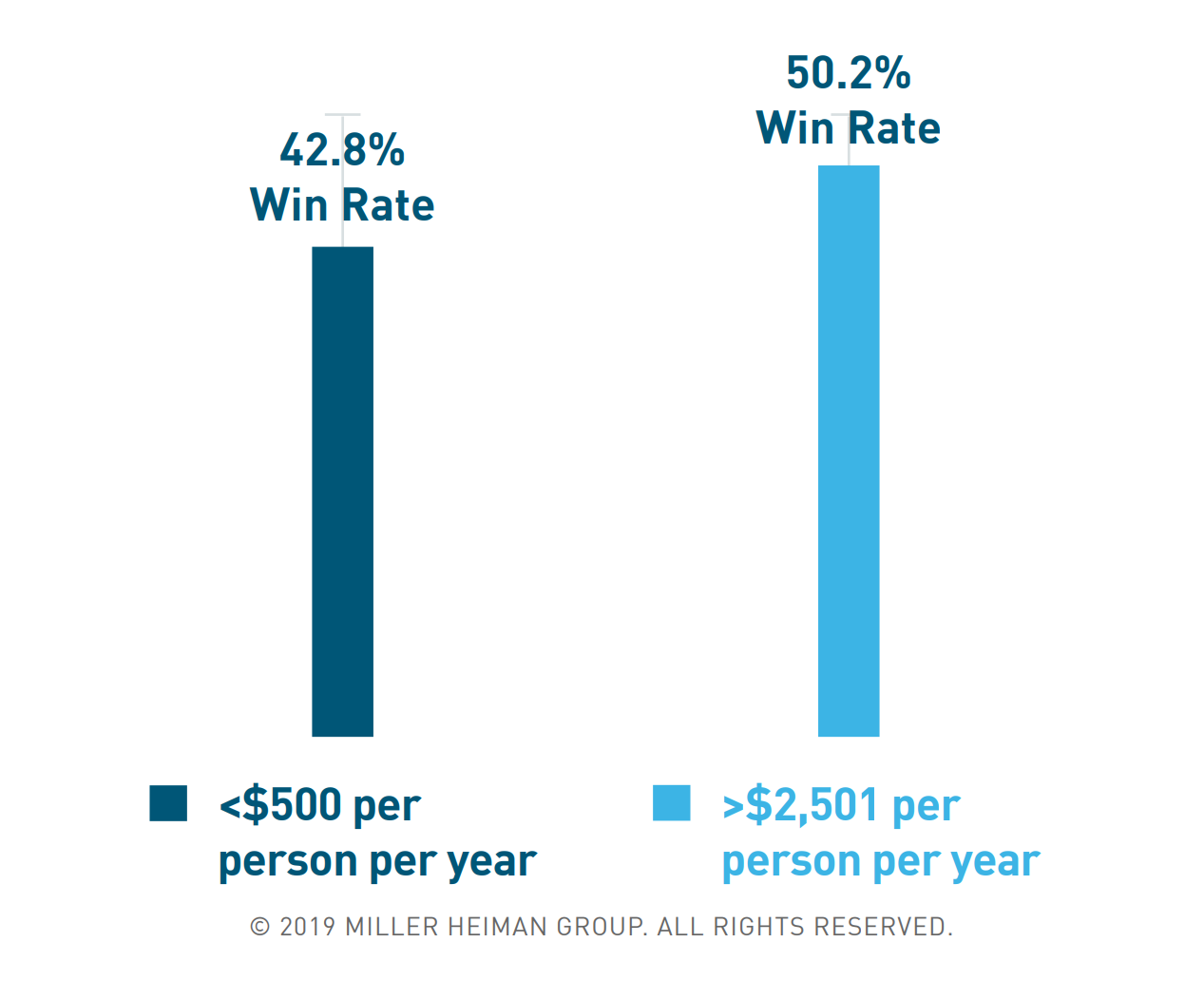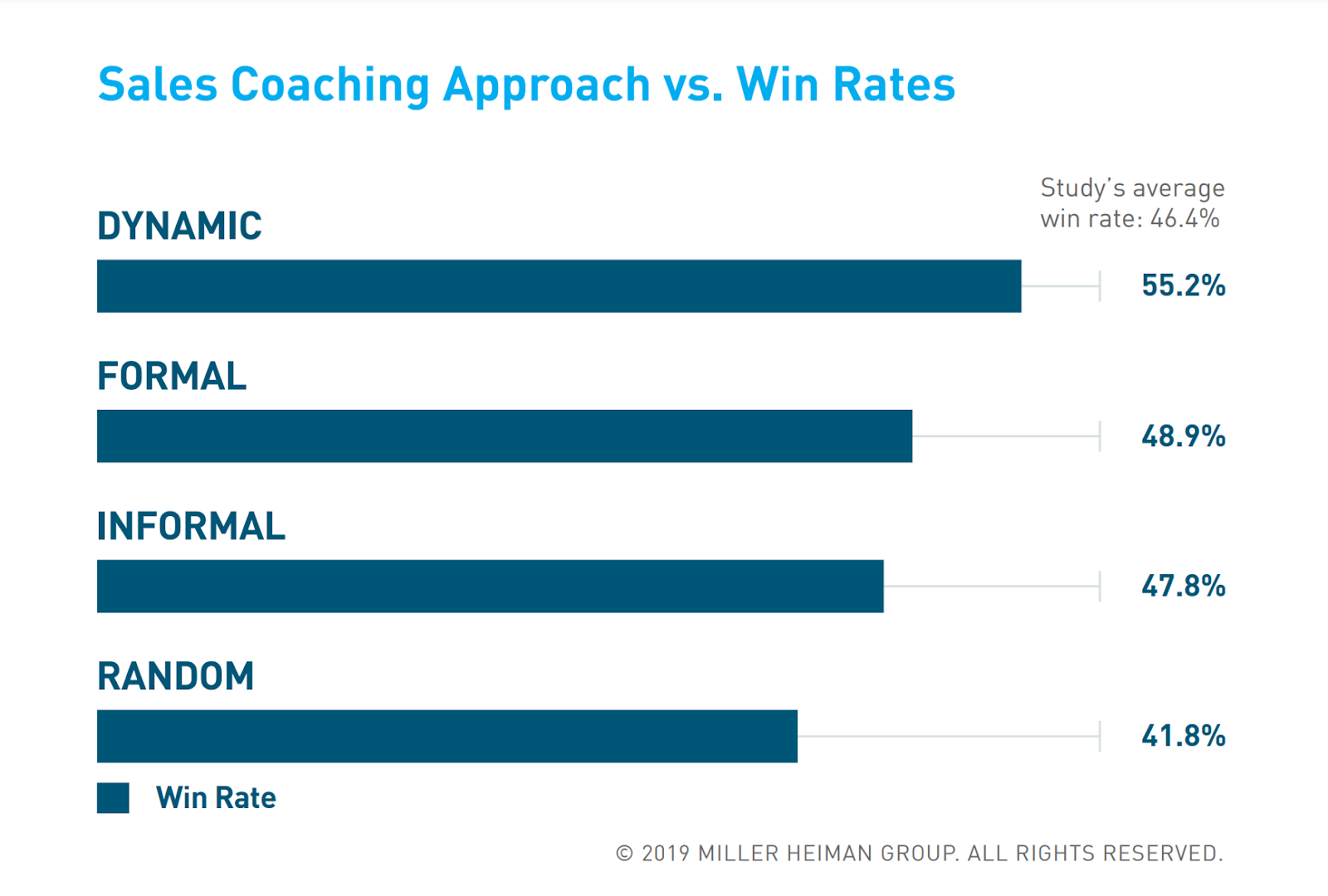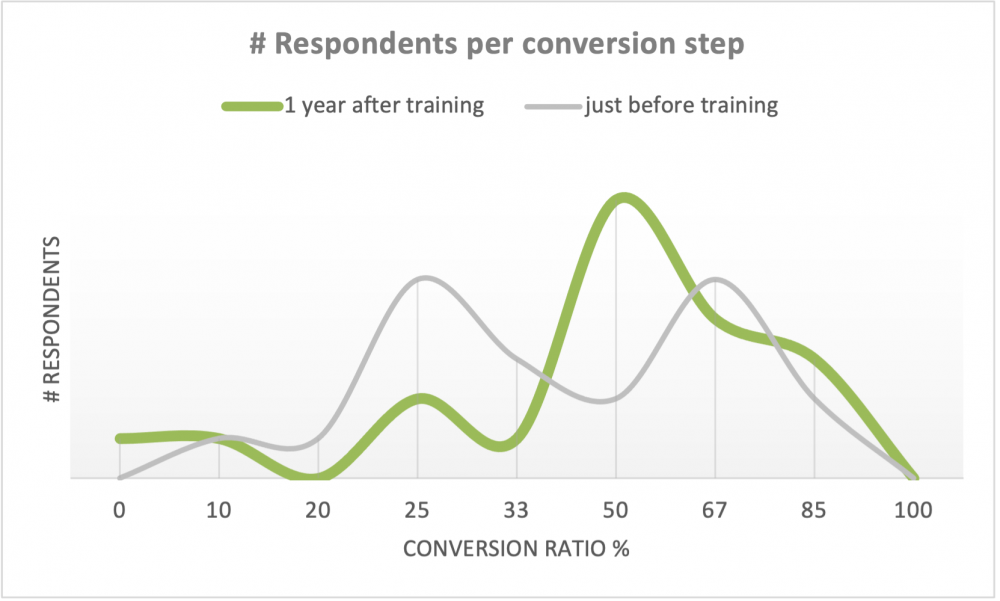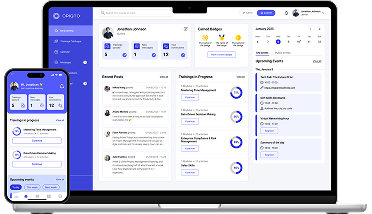Increasing sales has become a pressing issue for businesses of all sizes. The economy is uncertain. Consumer behavior and expectations are constantly evolving with new technology and trends. Globalization has intensified competition while operating expenses are increasing due to inflation and supply chain disruptions.
Businesses must adapt quickly to navigate and thrive amidst these challenges. It's not just about short-term profit but about survival, growth, and staying relevant in a rapidly evolving market. Sustainable sales growth enables businesses to reinvest in innovation, expand market reach, and withstand economic downturns.
How does one increase sales?
Sales teams' performance is dissected and thoroughly measured with dozens of KPIs like monthly new leads, conversion/win rate, average order value, customer acquisition cost and lifetime value, churn rate, cross-sell and upsell ratio, etc. Choosing the right KPIs and improving them leads to larger sales, as they:
- define clear and measurable objectives
- act as benchmarks to track progress and see trends
- hold individuals and teams accountable for their performance.
However, simply setting a higher bar won't bring you better results. Behind each KPI is a puzzle with lots of pieces, and to put them all in place, salespeople need to be Jacks of all trades with silver tongues. They require deep knowledge of the product, marketing principles, sales methodologies, cultural alignment, effective sales, objection handling techniques, sales automation, pipeline management, and customer management tools — the list can go on and on.
So, while KPIs help steer the sales teams in the right direction, they require a strong foundation of skills and knowledge to act upon. Building such an extended, multifaceted skill set requires a structured, deliberate approach. That's why systematic training is crucial for a sales team's success.
How does training impact sales teams' performance?
For starters, training and professional development opportunities contribute to employee well-being and lead to 34% higher retention, which is crucial for the company's bottom line per se: it would be extra hard to improve sales with an understaffed and unmotivated team.
Out of 51 million people who quit their jobs in 2022, costing the US economy over 900 billion dollars, most cited career growth opportunities as the reason for leaving. In fact, 94% of such employees would stay in the company had they been offered training.
However, training can also tangibly improve sales team performance. According to the Sales Enablement Study by CSO Insights, companies that invested more than average into their sales reps' training saw significantly higher win rates.

The study explains that training the sales force to implement mature sales processes drives productivity and performance gains. >75% adoption results in above-average gains for revenue plan attainment, quota attainment, and win rates, with a big boost at adoption rates bigger than 90%.
Coaching also has a massive impact on win rates and quota attainment, but only when it is done consciously and systematically, as random attempts at coaching show even worse-than-average results:

Aberdeen Group found that salespeople who complete at least 16 hours of training annually achieve a remarkable 27% increase in closed deals, and efficient prospecting and objection handling training reduces the sales cycle by 14%.
Another exciting survey by Hovingh & Partners showed that most salespeople benefited from sales training and coaching, improving in a year, on average, by 1 step, e.g., from 1 won deal to 2 lost (33%) to 1 to 1 (50%). One out of six even doubled their conversion rate. 75% of all respondents would convert half of their leads after the training.

At the same time, even though employees crave professional development so much, employers name "getting employees to make time for learning" as the #1 talent development challenge. Why so?
What makes sales team training so challenging?
While the benefits of sales training are clear, sales teams and organizations face many hurdles when it comes to its implementation:
Diverse skill levels: Sales teams often comprise individuals with varying experience, expertise, and backgrounds, making one-size-fits-all approaches ineffective. Tailoring training programs to accommodate these diverse skill levels while ensuring engagement and relevance for all participants is arduous.
Continuous market changes: The business environment is constantly evolving, with changes in market trends, competitor strategies, and customers going online. Not only do sales teams require ongoing training and skill enhancement, but the training itself must be constantly updated.
Logistical and resource constraints: Scheduling conflicts, budget limitations, and time constraints make organizing training fraught with limitations: effectively reaching and engaging all team members across diverse locations and schedules becomes a logistical nightmare, especially with remote and dispersed sales teams. According to ATD, in 2023, while 89% of organizations employed remote salespeople, only 32% of this group offered a fully structured training program for these employees.
Retention and application of knowledge: Sales training often involves lots of information, from product details to sales methodologies and customer relationship management techniques. Ensuring that sales reps retain and apply this knowledge effectively in real-world scenarios requires reinforcement, practice, and ongoing support from sales managers and mentors.
Measuring training effectiveness: Isolating and assessing the impact of sales training initiatives on sales performance, customer satisfaction, and revenue growth can be complicated.
Given all the challenges described above, management can feel skeptical about the necessity of training, which impedes resource allocation, content quality, alignment with business objectives and strategic priorities, and overall accountability, limiting the scope and effectiveness of the training efforts.
Addressing these challenges requires a strategic approach, with continuous learning, adaptive methodologies, and a commitment at all levels of the organization. Comprehensive training programs and innovative technologies can empower sales teams to succeed in dynamic and competitive markets.
How does LMS boost sales team training?
Obviously, the content is king. It builds product expertise, fosters company culture, and educates salespeople on all the value-added services, warranties, commercial gestures, sales techniques and strategies, sales software fluency, etc.
LMS provides a perfect framework, delivery methods, and ongoing support for making sales team training systematic, cohesive, and strategic, driving up its effectiveness and efficiency.
Diverse skill levels
Personalized learning paths allow training modules and paths to be tailored to different experience levels and skill gaps, translating to faster skill acquisition, quicker adaptation to new products or strategies, and a competitive edge in the marketplace.
Microlearning breaks down complex topics into bite-sized modules catering to diverse attention spans.
Gamification and leaderboards encourage engagement and healthy competition among team members, pushing them to excellence.
Continuous market changes
Authoring tools allow content to be quickly updated to keep up with the latest market trends, competitor analysis, and customer insights.
On-demand access ensures sales reps can access updated training materials anytime, anywhere. Using technology to deliver onboarding programs remotely leads to a 7% win rate increase.
Blended learning allows one to manage online modules and instructor-led sessions or personal coaching on one platform.
Logistical and resource constraints
A centralized knowledge hub ensures consistent messaging across the team, eliminating contradictions and conflicts in customer interactions, fostering customer trust, and strengthening brand identity. Properly stored and organized sales content improves win rates by 6%.
Mobile learning frees the teams from the desk to access training materials anytime, anywhere: during the commute, while waiting for a client, on a lunch break, or even at home.
Microlearning allows learners to squeeze in knowledge bursts during breaks or between calls, maximizing productivity while ensuring continuous learning and skill development.
Cost-effective scalability allows training large teams much more efficiently and affordably than in-person, easily accommodating new hires and expanding teams.
Retention and application of knowledge
Interactive modules use simulations, quizzes, and case studies. With realistic sales scenarios, sales reps can practice their pitch, handle objections, and navigate challenging negotiations to build confidence, hone their skills, and prepare for real-world encounters.
Assessments help track progress and identify knowledge gaps for targeted reinforcement.
Performance support tools offer access to job aids, quick reference guides, and on-demand resources within the LMS.
Measuring training effectiveness
Pre- and post-training assessments measure skill development and knowledge gain to quantify the impact of training.
Reporting and analytics tools track completion rates, engagement, and knowledge assessment scores, identifying knowledge gaps for data-driven improvement. Respondents using data to optimize sales training efforts report 9% higher win rates.
CRM integration helps check sales reps' performance against training results to assess the training ROI.
Case study: A global luxury goods company
One of Opigno's clients — a renowned luxury goods manufacturer — is leading a global sales network, a large share of which are partner multi-brand boutiques. As you can imagine, consistently representing the brand's diverse, intricate products across 120 countries, diverse cultures and languages, and hundreds of locations was particularly challenging without a centralized training platform.
This is how Opigno LMS helped the client to tackle this issue:
- equipped the sales teams with in-depth product knowledge, ensuring consistent brand messaging and customer service across diverse teams and regions
- provided the platform for continuous professional development and skills upgrading
- incentivized the salespeople to stick to training through microlearning and gamification.
Curious to discover more about their winning strategies? Dive into the success story and see how your sales team can unlock similar brilliance through LMS training.
Choose the right LMS for your sales team
Savvy teams require flexible, engaging learning experiences, and that is where the LMS shines, offering a dynamic toolkit that fits unique needs and busy schedules. With diverse learning methods, LMS transforms sales training into a dynamic, engaging journey that empowers teams to grow toward individual and organizational success.
Equipped with in-depth product knowledge, proven sales techniques, and strong communication skills, the sales team confidently navigates negotiations, handles objections, and closes deals efficiently. The result is improved sales performance, happier customers, and a significant boost to the company's bottom line.
Investing in LMS training for your sales team is a strategic move with far-reaching benefits that fuel organizational growth and success. If you seek the ideal solution for your business needs, contact us today to learn how Opigno can help you equip your sales team with all the necessary knowledge and tools to boost their performance.
Published on February 27, 2024
